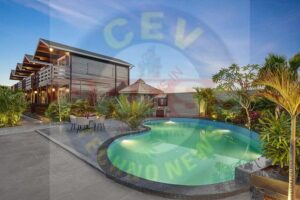VALUATION OF HILL RESORTS IN INDIA: PROFIT METHOD APPLICATION
Valuation of Hill Resorts in India: Profit Method Application
The valuation of hill resorts in India using the profit method involves a detailed analysis of the resort’s financial performance to determine its market value. This method is particularly useful for income-generating properties like resorts, where the value is closely tied to their ability to produce profit. Here are the key points involved in this process:
1. Understanding the Profit Method
The profit method, also known as the income approach, values a property based on its ability to generate income. This method involves estimating the future profits of the resort and then capitalizing these profits at an appropriate rate to determine the property’s value.
2. Data Collection and Analysis
Financial Statements
- Income Statements: Review the resort’s income statements for the past 3-5 years to understand revenue trends.
- Balance Sheets: Examine the balance sheets to assess the financial health and liabilities of the resort.
- Cash Flow Statements: Analyze cash flow statements to evaluate the resort’s liquidity and cash generation capability.

Market Data
- Occupancy Rates: Gather data on occupancy rates over different seasons to understand demand.
- Average Daily Rate (ADR): Obtain information on the average daily rate charged by the resort.
- Comparable Resorts: Collect data on similar resorts in the region to benchmark performance.
3. Estimating Future Profits
Revenue Projections
- Room Revenue: Estimate future room revenue based on historical occupancy rates and ADR.
- Food and Beverage: Project revenue from restaurants, bars, and other food and beverage services.
- Other Income: Include revenue from additional services like spa, recreation, and event hosting.
Expense Projections
- Operating Expenses: Estimate costs related to staff, utilities, maintenance, and other operational aspects.
- Fixed Costs: Account for fixed costs such as property taxes, insurance, and management fees.
- Capital Expenditures: Plan for future capital expenditures needed to maintain and upgrade the resort.
4. Calculating Net Operating Income (NOI)
- NOI Formula: Subtract the projected operating expenses from the projected total revenue.
- Adjustments: Make necessary adjustments for non-operating income and expenses to arrive at the accurate NOI.
5. Capitalization Rate (Cap Rate) Selection
- Market Analysis: Determine an appropriate capitalization rate based on market conditions and comparable sales.
- Risk Assessment: Consider the specific risks associated with the hill resort, such as seasonal fluctuations and location-specific factors.
6. Valuation Calculation
- Value Formula: Divide the projected NOI by the selected cap rate to calculate the market value of the resort.
- Sensitivity Analysis: Conduct a sensitivity analysis to understand how changes in revenue, expenses, or cap rate affect the valuation.
7. Final Considerations
Legal and Regulatory Compliance
- Ensure the resort complies with local regulations, zoning laws, and environmental policies.
Valuation Report
- Prepare a comprehensive valuation report documenting all assumptions, data sources, calculations, and conclusions.
Professional Judgement
- Apply professional judgement and experience to validate the findings and make necessary adjustments.
Valuing a hill resort in India using the profit method requires a thorough understanding of the resort’s financial performance and market dynamics. By carefully analyzing historical data, projecting future profits, and selecting an appropriate capitalization rate, a reliable valuation can be achieved. This method provides a clear picture of the resort’s income-generating potential, making it a valuable tool for investors, owners, and financial institutions.


